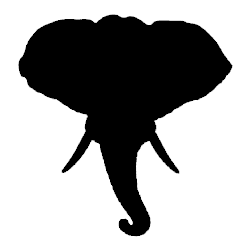CAMEROON
A number of arrests have led to a decrease in ivory openly available for sale, however Cameroon’s elephants continue to be threatened by poaching and it is also an important transit point for illicit ivory.



Is there a need to revise the existing NIAP or develop a new one? ‘YES‘

BEST PRACTICE
Cameroon has had some success in reducing the amount of trade in its domestic ivory market, as noted in the ETIS report to CoP17. There have also been several arrests of poachers and ivory traffickers by enforcement agencies working closely with non-governmental organisations such as the Last Great Ape Organisation (LAGA). There has also been a decrease in ivory openly for sale in Cameroon due to good enforcement; however, in some places ivory processing operations have merely shifted from business/retail locations to traders’ homes.
Cameroon’s NIAP is fairly comprehensive, but it should be revised to address the concerns outlined below (e.g. gaps in legislation).
KEY CONCERNS
Significant source of illegal ivory
Cameroon has lost several thousand of its endangered forest elephants from its section of the Tri-National Dja-Odzala-Minkébé (TRIDOM) region and the loss of more than 50 per cent from several smaller populations. Cameroon, along with Gabon and Congo, is the source of the most significant quantities of ivory going into trade from the Central African region. Much of the evidence for this stems from the forensic work on large-scale seizures that occur outside of these countries.
Key role in ivory trafficking
Since 2014, Cameroon has been implicated in 15 ivory seizures of three tonnes of ivory, roughly equivalent to ivory sourced from 413 elephants.
Four of these were large-scale ivory seizures amounting to a total of 2.7 tonnes of ivory. In addition to being a source country, Cameroon is also a transit country for illicit ivory coming from Gabon, Congo and other source countries which either leaves the country directly or moves onwards to Nigeria destined for Asian markets. Djoum in southern Cameroon is a crucial transit hub for ivory coming from the south (i.e. from Gabon) and from the east.
Lack of coordination between enforcement agencies
There is a lack of formal collaboration among relevant national government agencies to investigate poaching/ivory trafficking and no centralised intelligence database to facilitate law enforcement, leading to inadequate investigation of the organised elements that are fuelling poaching and ivory trafficking in and through Cameroon.
Failure to close legal domestic ivory market
Possession and processing of worked ivory for commercial gain are both authorised subject to permits, under conditions set out in a ministerial decree. The domestic ivory trade is therefore permitted subject to authorisation.
Weak legislation hindering enforcement
Domestic legislation does not contain the full range of measures necessary for tackling the illicit ivory trade. Ivory offences are not predicate offences for money laundering and there is no law permitting use of controlled deliveries or other covert law enforcement methods, including the use and management of human sources.
Lenient sentencing
Despite the progress in number of arrests, there is a concern that sentences are too lenient. Some ivory traffickers have said that they prefer to operate in Cameroon because, if arrested, they will face only minimal penalties.
Lack of reporting to facilitate CITES decision-making
Although a significant number of ivory seizures occur in Cameroon, the CITES Management Authority rarely reports them to CITES. In recent years, most seizures for Cameroon have been reported by the World Customs Organisation as part of the annual data exchange with ETIS or by the NGO community engaged in collaborative law enforcement actions including the Eagle Network, LAGA and WWF.
Poor ivory stock management
Cameroon seems to lack an accountable, transparent ivory stock management system that tracks the accumulation of ivory from protected areas, seizures and human elephant conflict. Lack of proper security and management of the Government’s ivory stockpile has also resulted in ivory leaking into the black market. The legal chain of custody for ivory once it comes into the hands of government authorities for any reason needs to be clearly codified.
RECOMMENDATIONS FOR NIAP REVISION / PRIORITY AREAS OF IMPLEMENTATION:
- Amend legislation to recognise wildlife crime as a predicate offence enabling financial and money laundering investigations and asset forfeiture.
- Amend legislation to prohibit any exemptions for legal trade in ivory, effectively closing Cameroon’s legal domestic ivory market
- Adopt legislation permitting controlled deliveries for wildlife crime
- Establish an effective collaboration mechanism between national agencies to combat wildlife crime
- Establish a centralised intelligence database to aid law enforcement
- Develop sentencing guidelines to aid prosecutors and the judiciary resulting in deterrent sentencing in wildlife crime cases
- Improve elephant product seizure reporting to ETIS
- Establish an ivory stock management system that is accountable and transparent and dispose of the stock after inventory and completion of enforcement action
Key indicators of NIAP progress
